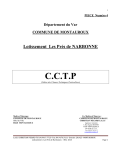Download Mercedes-Benz 400 SEL Specifications
Transcript
AUTO TRANS DIAGNOSIS - W4A020 & W4A040 Article Text 1994 Mercedes-Benz S320 For 1 Copyright © 1998 Mitchell Repair Information Company, LLC Thursday, November 20, 2008 02:08PM ARTICLE BEGINNING AUTOMATIC TRANSMISSIONS Mercedes-Benz W4A020 & W4A040 APPLICATION & IDENTIFICATION Identification code is stamped on identification plate or transmission housing. Use identification code when ordering parts. TRANSMISSION APPLICATIONS ÄÄÄÄÄÄÄÄÄÄÄÄÄÄÄÄÄÄÄÄÄÄÄÄÄÄÄÄÄÄÄÄÄÄÄÄÄÄÄÄÄÄÄÄÄ Year/Vehicle Application Trans. Model 1983 240D .............................. 300 Series ........................ 380 Series ........................ W4A020 W4A040 W4A040 1984 240D .............................. 300 Series ........................ 380 Series ........................ W4A020 W4A040 W4A040 1985 190 300 380 500 Series Series Series Series ........................ ........................ ........................ ........................ W4A020 W4A040 W4A040 W4A040 1986 190 300 380 500 Series Series Series Series ........................ ........................ ........................ ........................ W4A020 W4A040 W4A040 W4A040 1987 190 300 420 560 Series Series Series Series ........................ ........................ ........................ ........................ W4A020 W4A040 W4A040 W4A040 1988 190D (2.5L & 2.5L TD) ............. 190E (2.3L, 2.3L-16V & 2.6L) ................. W4A020 W4A020 260E (2.6L) ........................ 300E .............................. 300D .............................. 300SDL ............................ 300TD ............................. 420SEL ............................ 560SEC ............................ 560SEL ............................ 560SL ............................. 1989 190D (2.5L & 2.5L TD) ............. 190E (2.3L, 2.3L-16V & 2.6L) ................. 260E (2.6L) ........................ 300E .............................. 300D .............................. 300SDL ............................ 300TD ............................. 420SEL ............................ 560SEC ............................ 560SEL ............................ 560SL ............................. 1990 190D (2.5L & 2.5L TD) ............. 190E (2.3L, 2.3L-16V & 2.6L) ................. 260E (2.6L) ....................... 300E .............................. 300D .............................. 300SDL ............................ 300TD ............................. 420SEL ............................ 560SEC ............................ 560SEL ............................ 560SL ............................. 1991 190E (2.3L) ............... 190E (2.6L) ............... 300CE (3.0L) .............. 300D (2.5L Turbo) ......... 300E (2.6L) ............... 300E & 300TE (3.0L) ....... 300SE & 300SEL (3.0L) ..... 350SD & 350SDL Turbo (3.5L) ..... 722.408 722.409 722.359 722.418 722.409 722.358 722.351 W4A020 W4A040 W4A040 W4A040 W4A040 W4A040 W4A040 W4A040 W4A040 W4A020 W4A020 W4A020 W4A040 W4A040 W4A040 W4A040 W4A040 W4A040 W4A040 W4A040 W4A020 W4A020 W4A020 W4A040 W4A040 W4A040 W4A040 W4A040 W4A040 W4A040 W4A040 W4A020 W4A020 W4A040 W4A020 W4A020 W4A040 W4A040 722.361 W4A040AUTO TRANS DIAGNOSIS - W4A020 & W 420SEL (4.2L) ............. 500SL (5.0L) .............. 560SEC & 560SEL (5.6L) .... 722.355 W4A040 722.353 W4A040 722.350 W4A040 1992 190E (2.3L) ............... 190E (2.6L) ............... 300CE (3.0L) .............. 300D (2.5L Turbo) ......... 300E (2.6L) ............... 300E & 300TE (3.0L) ....... 300SD Turbo (3.5L) ........ 300SE & 300SEL (3.2L) ..... 400E (4.2L) ............... 400SE (4.2L) .............. 500E (5.0L) ............... 500SEL (5.0L) ............. 722.408 722.409 722.359 722.418 722.409 722.358 722.367 722.368 722.354 722.366 722.365 722.370 W4A020 W4A020 W4A040 W4A020 W4A020 W4A040 W4A040 W4A040 W4A040 W4A040 W4A040 W4A040 1993 190E (2.3L) ............... 190E (2.6L) ............... 300D (2.5L Turbo) ......... 300E (2.8L) ............... 300E (3.2L) ............... 300SD (3.5L) .............. 400E (4.2L) ............... 400SEL (4.2L) ............. 500E (5.0L) ............... 500SEL (5.0L) ............. 722.408 722.409 722.418 722.433 722.369 722.367 722.354 722.366 722.365 722.370 W4A020 W4A020 W4A020 W4A020 W4A040 W4A040 W4A040 W4A040 W4A040 W4A040 1994 C220 (2.3L) ............... C280 (2.8L) ............... E320 (3.2L) Cabriolet ............... Coupe ................... Sedan ................... Wagon ................... E420 (4.2L) ............... E500 (5.0L) ............... S350 (3.5L) ............... S420 (4.2L) ............... S500 (5.0L) ............... 722.423 W4A020 722.424 W4A020 722.369 722.369 722.369 722.369 722.366 722.370 722.367 722.366 722.370 W4A020 W4A020 W4A020 W4A020 W4A020 W4A040 W4A040 W4A040 W4A040 ÄÄÄÄÄÄÄÄÄÄÄÄÄÄÄÄÄÄÄÄÄÄÄÄÄÄÄÄÄÄÄÄÄÄÄÄÄÄÄÄÄÄÄÄÄ DESCRIPTION AUTO TRANS DIAGNOSIS - W4A020 & W TRANSMISSION This is a fully automatic 4-speed transmission consisting of a 3-element welded torque converter, 2 compound planetary gear sets, 2 multiple-disc clutches, one overrunning clutch and 3 brake bands. Brake bands control function of planetary gear sets. A hydraulic system, pressurized by a primary gear type pump and a secondary piston type pump provide working pressure required to operate friction elements and automatic controls. 1st Gear In 1st gear, brake band B-2 is applied and the one-way converter clutch is locked. In selector lever position "2", clutch K-2 is also engaged. Both planetary gear sets are involved in gear reduction. 2nd Gear In 2nd gear, brake band B-1 and brake band B-2 are applied. Both planetary gear sets are involved in gear reduction. 3rd Gear In 3rd gear, brake band B-2 is applied and clutch K-1 is engaged. Only the rear planetary gear set is involved in gear reduction. 4th Gear In 4th gear, clutch K-1 and clutch K-2 are applied. Both planetary gear sets rotate as a locked unit. Reverse Gear In reverse, disc brake B-3 is applied, the one-way converter clutch is locked, and clutch K-2 is engaged. Both planetary gear sets are involved in gear reduction. VALVE BODY The valve body receives inputs from selector lever position, mode selector switch, accelerator pedal position (control pressure), engine torque (intake manifold vacuum), kick-down and vehicle speed. Depending on operating conditions, the oil flow is controlled to various points of demand in the transmission and the quality and pressure level are adapted to requirements. PRIMARY & SECONDARY PUMP Primary Pump The primary pump is housed in the front transmission cover Mercedes-Benz S320For 1 AUTOis TRANS DIAGNOSIS W4A020through & W4A040Article Text (p. 4)1994of and driven by the -engine the drive flange the torque Copyrig converter. The primary pump operates as long as the engine is turning, and supplies pressurized oil to the entire hydraulic system. The drive of the secondary pump is switched off by the cut-off piston by means of primary pump pressure. Secondary Pump The secondary pump is required only for towing and towstarting the vehicle. It is designed as an external gear pump and is positioned in the rear section of the transmission. If needed, the secondary pump is driven by the centrifugal governor shaft. The secondary pump operates only if the engine is not running and the vehicle is rolling (tow-starting procedure), while brake band B-2 slowly engages. Pump stops operating when vehicle comes to a stop or if transmission has shifted into 4th gear (engine running). OPERATING PRESSURES The working pressure control valve, basic pressure control valve, 2 two-way check balls, a modulating pressure relief valve, and a non-return (one-way) valve and restriction form the working pressure circuit. The working pressure circuit is influenced by position of accelerator pedal, vehicle speed, selector lever position, and gear engaged. The working pressure, governed by working pressure circuit, operates disc brake B-3, brake bands and clutches. The pressure level is adapted to the particular operating condition, regardless of the quantity of oil supplied from the primary pump or secondary pump. This enables the primary pump capacity to be kept as low as possible and achieve a high transmission efficiency. The working pressure is always the highest pressure in the hydraulic system. All other operating pressures are derived from this maximum pressure and reduced by control valves to a lower pressure level. The following governed pressures control the hydraulic system and operate shift element. * * * * * * * * * * Reduced Operating Pressure Governor Pressure Lubricating Pressure Modulating Pressure (Vacuum Controlled) Modulating Pressure (Governor Controlled) Full Throttle Pressure Load Dependent Control Pressure Kick-Down Control Pressure Boosted Governor Pressure Shift Pressure DAMPER SYSTEM AUTO TRANS The principal task of the hydraulic system (circuits) consists of controlling the working pressure during gear changes (shifts). During each gear shift transition, the engine speed increases (during a downshift) or decreases (during an upshift). In order to provide a smooth transition between gear shifts, 4 independent damper circuits are used. The clutch K-1 damper circuit controls clutch K-1 during 2nd to 3rd gear downshifts or upshifts. The clutch K-2 damper circuit controls clutch K-2 during 3rd to 4th gear downshifts or upshifts. The brake band B-1 damper circuit controls brake band B-1 during 1st to 2nd gear downshifts or upshifts. The "engaging" damper circuit controls the engagement of the clutches or brake bands, depending on selector lever position. When selector lever is moved from "N" (Neutral) to "D" (Drive) or "3" (3rd gear), brake bands B-1 and B-2 are controlled. When selector lever is moved from "N" (Neutral) to "2" (2nd gear), clutch K-2 and brake band B-2 are controlled. When selector lever is moved from "N" (Neutral) to "R" (Reverse), clutch K-2 and disc brake B-3 are controlled. The"engaging" damper controls the working pressure pattern after drive positions "R", "D", "3" and "2" are engaged. TRANSMISSION SHIFT POINT DELAY The 2nd to 3rd gear upshift on some models is delayed 60-80 seconds to enable the catalytic converter to more rapidly reach its operating temperature. The shift point retard solenoid is energized by the CIS-E control unit or air mass sensor control unit through the transmission shift point (upshift) retard relay. Governor pressure is lowered through hydraulic line which is bolted to the governor pressure test port. See Fig. 1. Under certain operating conditions (coolant temperature, vehicle speed and time), the solenoid valve is de-energized and the governor pressure is dumped. The 2nd to 3rd gear upshift is delayed only when coolant temperature is 0-140øF (0-60øC). The operating time is dependent on coolant temperature when the engine is started, and is longest when coolant temperature is 68-86øF (20-30øC). AUTO TRANS DIAGNOSIS - W4A020 & W4A040Article Text (p. 6)1994 Mercedes-Benz S320For 1 Copyrig Fig. 1: Transmission Shift Point Delay Components (190E 2.3L Shown) Courtesy of Mercedes-Benz of North America. TROUBLE SHOOTING Transmission Slips In All Gears Incorrect modulating pressure. Modulating pressure control valve or pressure relief valve is dirty or sticking. Vacuum line to transmission vacuum capsule clogged or leaking. Working pressure control valve dirty or sticking. Low working pressure. Defective primary pump. Transmission Slips When Starting Off In 1st Or 2nd (Reverse Works Normally) Band B-2 shift valve sticking. Band B-2 piston worn or damaged. Band B-2 adjusted incorrectly or worn or damaged. Adjust 1994 Mercedes-Benz S320For 1 AUTO TRANS DIAGNOSIS - W4A020 &a W4A040Article Textpin (p. 7)(if brake Band B-2 by installing longer thrust necessary). If transmission operates properly with selector lever in "2", but not in "3" or "D" position, the one-way clutch may be slipping. Transmission Slips In 2nd Gear Or Shifts From 1st To 3rd Gear Check control valve B-1 for ease of operation. Replace valve body (if necessary). Remove and install brake band piston B-1, check sealing ring and replace (if necessary). Replace brake band B-1 and thrust body for B-1. Command valve binding. Transmission Slips During 2-3 Upshift Or Slips Initially, Copyrig Then Grabs Hold Check modulating pressure and adjust (if necessary). Check for temperature throttle installation (if equipped). Valve body worn or damaged. Replace valve body (if necessary). Replace inner plates of clutch K-1 or recondition clutch (if necessary). Check Teflon ring of front cover. Transmission Slips During 3-4 Upshift Check and adjust modulating pressure. Governor damaged or working pressure incorrect. Valve body worn or damaged. Replace valve body (if necessary) Check Teflon rings supporting clutch K-2. Replace inner plates of clutch K-2 or recondition clutch (if necessary). No Positive Engagement In Reverse Check plates and sealing rings on disc brake B-3 piston. Replace if necessary. Harsh Engagement When Shifting Gears Incorrect working pressure. Check and adjust modulating pressure. Check vacuum line and connections for leaks. On diesel engine equipped vehicles, check vacuum control valve. Coolant entering transmission oil cooler and contamination transmission fluid. Replace radiator. If necessary, replace all friction linings and/or replace transmission. Harsh Engagement When Selecting "D" Or "R" Idle speed too high. Check pressure receiving (pick-up) piston in valve body for ease of operation and correct installation. Replace valve body (if necessary). NOTE: Pressure pick-up requires a running period of approximately 2 seconds. Harsh engagement may occur during repeated shifts between "N" and "D". If harshness takes place within 2 seconds, condition is considered normal. Harshness On 4-3 Downshift Sealing ring on release end of band B-2 worn or damaged. Band B-2 piston worn or damaged. Band B-2 thrust body damaged. Chatter During Upshift If upshift is not in proper order, repair or replace valve body. Will Not Upshift Incorrect governor pressure. Defective governor assembly. Check kickdown solenoid valve for a tendency to stick or for constant voltage to solenoid caused by a defective fuel pump relay or sticking AUTO TRANS kickdown switch. Valve body dirty or valves sticking. Repair or replace valve body. Upshifts At Higher Speeds Than Specified Check pressure control cable engagement, condition and adjustment. Check kickdown solenoid valve for a tendency to stick or for constant voltage to solenoid caused by a defective fuel pump relay or sticking kickdown switch. Check governor pressure. If regulator pressure is too low, replace centrifugal governor. Ensure control pressure regulating valve is operable. Upshifts At Lower Speeds Than Specified Check pressure control cable engagement, condition and adjustment. Check full throttle stop by accelerating engine and ensuring that throttle valve rests against full throttle stop. Readjust throttle stop (if necessary). Check governor pressure. If governor pressure is too high, replace centrifugal governor. Repair or replace valve body. No Kickdown Check throttle control and pressure control cable engagement, condition and adjustment. Connect kickdown solenoid to battery and check for proper operation. Replace solenoid (if necessary). Check kickdown valve in valve body. Replace valve body (if necessary). No Downshift (4-3 & 3-2) Control pressure cable out of adjustment. Leaking vacuum hoses and/or connections. Ensure brake shaft piston is operable. Replace valve body (if necessary). Uncontrolled Downshifts Outside Range Of Kickdown Switch Remove kickdown solenoid valve. Check "O" ring on kickdown solenoid valve for damage. Check kickdown switch for sticking in pushed-in position. Replace switch (if necessary). Check for kickdown solenoid valve stuck in opened position. Replace kickdown solenoid valve (if necessary). Poor Acceleration When Starting Off Check stall speed. If stall speed is 400-700 RPM less than specified value, one-way clutch in torque converter is slipping. Replace torque converter (if necessary). Parking Lock Will Not Engage Check rear engine mount. Replace engine mount (if necessary). Check adjustment of selector rod. Adjust selector rod (if necessary). Selector Lever Cannot Engage "R" Or "P" With engine running, clean centrifugal governor and ensure correct operation. With engine not running, check operation of detent AUTO TRANS DIA piston in lower cover. Engine Cannot Be Started In Selector Lever Position "P" & "N" Adjust shift rod and starter lock-out switch. Replace starter lock-out switch (if necessary). Oil Loss With Smoke In Exhaust Diaphragm in vacuum control unit defective. Transmission oil is being drawn from engine through vacuum line. Replace vacuum control unit (if necessary). Oil Loss Between Torque Converter & Primary Pump Seal torque converter oil drain plug. If leak continues, replace radial sealing ring and "O" ring on primary pump. Check primary pump "O" ring groove for porosity. Replace primary pump (if necessary). Howling Noise When Changing Gears (Under Full Load) Replace transmission oil filter. Howling Noise Which Increases As Engine RPM Increases Check primary pump and replace if necessary. 1st Gear & Reverse Too Loud Replace front planetary gear set. Reverse and 1st gear are louder than forward (driving) gears due to gear reduction. If noise seems too loud, or if in doubt, a similar vehicle should be used for comparison. 3rd Gear Too Loud Replace rear planetary gear set. Rattling Noise at 1500 RPM In All Selector Lever Positions Except "R" Disc brake B-3 plates are vibrating in transmission housing. Replace plates of disc brake B-3, install damper spring and set release clearance to minimum value. Light Grinding Noise In "P" & "N" Selector Lever Positions This condition is normal if a "rolling" noise of front planetary gear set is heard. If noise seems too loud, or if in doubt, a similar vehicle should be used for comparison. "Rolling" Noises When Driving In Reverse Disc brake B-3 release clearance too great. Adjust release clearance to 0.06-0.08" (1.5-2.0 mm) or replace disc brake plates. Outside plate carrier of clutch K-1 contacts piston. AUTO TR Primary Pump Bushing Loosens After A Short Operating Period Dowel pins for centering transmission to engine are not in place. TESTING For vacuum control circuit tests, hydraulic pressure tests, and road tests, see the AUTO TRANS OVERHAUL - W4A020 & W4A040 article in the AUTO TRANS OVERHAUL section. END OF ARTICLE AUTO TRANS DIAGNOSIS - W4A020 & W4A040Article Text (p. 11)1994 Mercedes-Benz S320For 1 Copy TRANSMISSION REMOVAL & INSTALLATION - A/T Article Text 1994 Mercedes-Benz S320 For 1 Copyright © 1998 Mitchell Repair Information Company, LLC Thursday, November 20, 2008 02:11PM ARTICLE BEGINNING 1994 TRANSMISSION SERVICING Mercedes-Benz Transmission Removal & Installation - Automatic S320, S350, S420, S500 REMOVAL & INSTALLATION CAUTION: If metal chips are present in transmission oil pan, torque converter must be replaced. Flushing will not remove all metal chips from a torque converter. Failure to replace torque converter may result in future transmission failure. S350, S420 & S500 Removal 1) Disconnect negative battery cable. Disconnect longitudinal engine throttle control shaft. Disconnect control pressure cable. Remove front crossmember assembly. 2) Remove transmission oil pan drain plug. Remove torque converter drain plug. Drain transmission fluid. Remove starter. Remove torque converter drive plate bolts (6 bolts) through starter opening. Remove entire exhaust system assembly from exhaust manifold(s). Remove rear crossmember with mount. 3) Release cable strap and unscrew cable on kickdown solenoid valve. Unscrew retaining bolts for pulse generator. Remove pulse generator. On V8 engines, disconnect shift point retard connector located on right rear corner of engine. 4) On all models, loosen drive shaft center bearing bolts. Loosen large clamping nut on drive shaft. Clamping nut is located near center bearing. Remove drive shaft flange bolts. With clamping nut loosened, push drive shaft as far back from transmission as possible. 5) Turn starter lockout switch locking element before disconnecting starter lockout switch connector. Using 2 screwdrivers, pry off starter lockout switch connector from transmission. 6) Disconnect shift rod from range selector lever. Disconnect White vacuum line for vacuum box. Disconnect Red vacuum line for mode program. Disconnect Black/Green vacuum line for shift point retard. 7) Disconnect transmission oil cooler feed and return lines. Remove transmission dipstick tube bolt from transmission and cylinder head. Remove transmission dipstick tube. 8) On V8 engines, remove transmission mounting bolts except 2 nuts on either side of transmission. Using a transmission jack, lift transmission slightly. Remove 2 remaining transmission mounting nuts. 9) On 6-cylinder engines, remove transmission mounting bolts except 2 bolts on either side of transmission. Using a transmission jack, lift transmission slightly. Remove 2 remaining transmission mounting bolts. On all vehicles, push transmission rearward and lower. Ensure torque converter does not fall from transmission during removal. Installation To install, reverse removal procedure. Tighten bolts and nuts to specification. See TORQUE SPECIFICATIONS. Use NEW transmission oil cooler feed and return line "O" rings. Adjust control pressure cable and linkages as necessary. Fill transmission with fluid. See TRANSMISSION SERVICING - A/T article in AUTOMATIC TRANSMISSION SERVICING section. S320 Removal 1) Disconnect negative battery cable. Remove transmission dipstick tube bolt from transmission and cylinder head. Using pliers, squeeze plastic clip together and pull out control pressure cable. 2) Remove transmission oil pan drain plug. Remove torque converter drain plug. Drain transmission fluid. Remove plastic cover to access torque converter drive plate bolts. Remove torque converter drive plate bolts (6 bolts) through opening. 3) Remove crossmember with mount. Remove drive shaft flange bolts. Disconnect oxygen sensor harness on tunnel and disconnect mounting clips. Remove exhaust support bracket bolts from transmission. Remove entire exhaust system assembly from exhaust manifold. 4) Remove speedometer shaft. On vehicles equipped with an electronic speedometer, unscrew pulse generator. On all vehicles, disconnect shift point increase solenoid valve connector. Disconnect transmission overload switch connector and pull off vacuum line. 5) Turn starter lockout switch locking element before disconnecting starter lockout switch connector. Using 2 screwdrivers, pry off starter lockout switch connector from transmission. 6) Disconnect shift rod from range selector lever. Disconnect transmission oil cooler feed and return lines. Remove transmission dipstick tube bolt from transmission. Remove transmission dipstick tube. Ensure all electrical connections are disconnected from transmission. 7) Install Retainer (126 589 01 62 00) through ventilation grill cutout into torque converter drain plug. Remove transmission mounting bolts except 2 bolts on either side of transmission. Using a transmission jack, lift transmission slightly. Remove 2 remaining transmission mounting bolts. Push transmission rearward and lower. Installation TRANSMISS To install, reverse removal procedure. When installing torque converter to transmission, apply a light coat of grease to torque converter centering pin. Tighten bolts and nuts to specification. See TORQUE SPECIFICATIONS. Adjust control pressure cable and linkages as necessary. Fill transmission with fluid. See appropriate TRANSMISSION SERVICING - A/T article in AUTOMATIC TRANSMISSION SERVICING section. TORQUE SPECIFICATIONS TORQUE SPECIFICATIONS TABLE ÄÄÄÄÄÄÄÄÄÄÄÄÄÄÄÄÄÄÄÄÄÄÄÄÄÄÄÄÄÄÄÄÄÄÄÄÄÄÄÄÄÄÄÄÄÄÄÄÄÄÄÄÄÄÄÄÄÄÄÄ Application Ft. Lbs. (N.m) Drive Plate Bolt ................................. Front Crossmember Bolt (1) ....................... Drive Shaft Clamping Nut ................... 22-30 Transmission Mounting Bolt (2) 10-mm .......................................... 12-mm .......................................... Transmission Oil Pan Drain Plug .................. Torque Converter Drain Bolt ...................... 31 (42) 33 (45) (30-40) 41 48 10 12 (55) (65) (14) (16) (1) - Replace self-locking bolts. (2) - V8 engines use 2 nuts, one on each side of transmission. ÄÄÄÄÄÄÄÄÄÄÄÄÄÄÄÄÄÄÄÄÄÄÄÄÄÄÄÄÄÄÄÄÄÄÄÄÄÄÄÄÄÄÄÄÄÄÄÄÄÄÄÄÄÄÄÄÄÄÄÄ END OF ARTICLE TRANSM TRANSMISSION SERVICING - A/T Article Text 1994 Mercedes-Benz S320 For 1 Copyright © 1998 Mitchell Repair Information Company, LLC Thursday, November 20, 2008 02:12PM ARTICLE BEGINNING 1994 TRANSMISSION SERVICING Mercedes-Benz Transmission Servicing - Automatic S320, S350, S420, S500 IDENTIFICATION AUTOMATIC TRANSMISSION APPLICATIONS TABLE ÄÄÄÄÄÄÄÄÄÄÄÄÄÄÄÄÄÄÄÄÄÄÄÄÄÄÄÄÄÄÄÄÄÄÄÄÄÄÄÄÄÄÄÄÄÄÄÄÄÄÄÄÄÄÄÄÄÄÄÄÄÄÄÄÄÄÄÄÄÄ Model S320 S350 S420 S500 Body 3.2L 3.5L 4.2L 5.0L ................... ................... ................... ................... 140.032 140.043 140.043 140.051 Transmission .................... .................... .................... .................... 722.508 722.367 722.366 722.370 ÄÄÄÄÄÄÄÄÄÄÄÄÄÄÄÄÄÄÄÄÄÄÄÄÄÄÄÄÄÄÄÄÄÄÄÄÄÄÄÄÄÄÄÄÄÄÄÄÄÄÄÄÄÄÄÄÄÄÄÄÄÄÄÄÄÄÄÄÄÄ LUBRICATION SERVICE INTERVALS Check fluid level at first 800-1000 miles and every 15,000 miles afterward. Change fluid and filter every 30,000 miles. Under severe service conditions, change fluid every 15,000 miles. CHECKING FLUID LEVEL With transmission fluid at normal operating temperature of 176øF (80øC), park vehicle on level surface. Place selector lever in the "P" position and set parking brake. Allow engine to idle for 2 minutes. Measure fluid level with dipstick completely inserted and locking lever released. RECOMMENDED FLUID Use Dexron-II ATF. FLUID CAPACITIES TRANSMISSION REFILL CAPACITIES TABLE ÄÄÄÄÄÄÄÄÄÄÄÄÄÄÄÄÄÄÄÄÄÄÄÄÄÄÄÄÄÄÄÄÄÄÄÄÄÄÄÄÄÄÄÄÄÄÄÄÄÄÄÄÄÄÄÄÄÄÄÄÄÄÄÄÄÄÄÄÄÄ Refill Qts. (L) Application S320 & S350 ................ 6.6 (6.2) Dry Fill Qts. (L) ................. 7.7 (7.3) S420 & S500 ................ 8.1 (7.7) ................. 9.1 (8.6) ÄÄÄÄÄÄÄÄÄÄÄÄÄÄÄÄÄÄÄÄÄÄÄÄÄÄÄÄÄÄÄÄÄÄÄÄÄÄÄÄÄÄÄÄÄÄÄÄÄÄÄÄÄÄÄÄÄÄÄÄÄÄÄÄÄÄÄÄÄÄ DRAINING & REFILLING 1) Disconnect filler tube from oil pan, and drain fluid. Rotate engine until torque converter drain plug is at bottom of torque converter housing. Remove plug and drain fluid. Install plug, using a new sealing ring. Remove oil pan and filter. 2) Install filter and oil pan, using a new gasket. Attach fill tube, using new sealing rings on hollow screw. Add about 3.2 qts. (3L) of automatic transmission fluid. 3) Apply parking brake and start engine. Place selector lever in the "P" position. Run engine at idle and gradually add fluid. Momentarily place selector lever in each gear, and then return to "P" position. Check fluid level and add if necessary. DO NOT overfill. ADJUSTMENTS SHIFT LINKAGE Before adjusting shift linkage, make sure neutral safety switch is properly adjusted. See NEUTRAL SAFETY SWITCH. To adjust shift linkage, disconnect control rod from gear selector lever. Place transmission lever in "N" (Neutral) position. Loosen lock nut at end of control rod. Adjust rod length so clearance is .04" (1 mm) between gear selector lever and "N" stop on gate plate. Connect control rod, and secure and tighten lock nut. See Fig. 1. Fig. 1: Adjusting Shift Linkage (722.4 Trans. Shown; Others Similar) Courtesy of Mercedes-Benz of North America CONTROL PRESSURE CABLE S350 TRANSM Ensure throttle control cable is correctly adjusted. Disconnect cable ball socket. Pull control cable forward until slight resistance is felt. Holding cable in this position, check if ball socket fits on ball with no tension. If tension is felt, use adjusting nut to change cable length. S320 Remove air cleaner. Adjust control pressure cable by turning adjusting screw until tips of needles align. Install air cleaner. See Fig. 2. Fig. 2: Aligning Needles (S320) Courtesy of Mercedes-Benz of North America S420 & S500 Remove air cleaner. Loosen 2 nuts on connecting rod. Turn connecting rod until tips of needles align. See Fig. 3. Tighten 2 nuts on connecting rod. Install air cleaner. TRANSMISSION SERVICING - A/TArticle Text (p. 3)1994 Mercedes-Benz S320For 1 Co Fig. 3: Aligning Needles (V8 Engine) Courtesy of Mercedes-Benz of North America CONTROL PRESSURE CABLE VACUUM ELEMENT NOTE: Not all vehicles are equipped with a control pressure cable vacuum element. Only vehicles with dual shifting modes for transmission may have this option. 1) Ensure control pressure cable is properly adjusted. See CONTROL PRESSURE CABLE. Raise and support vehicle. Disconnect vacuum hose from control pressure cable vacuum element. See Fig. 4. 2) Connect a vacuum supply to vacuum element. Pull control pressure cable up to full load stop. Measure how far piston sticks out of vacuum element (distance "A"). See Fig. 5. See VACUUM ELEMENT PISTON PROTRUSION table. If vacuum element piston protrusion is not to © 1998 Mitchell R Mercedes-Benz S320For 1 Copyright TRANSMISSION SERVICING - A/TArticlescrew Text (p.on 4)1994 specification, turn adjustment control pressure cable vacuum element. See Fig. 4. Fig. 4: Connecting Vac. Hose To Control Pressure Cable Vac. Element Courtesy of Mercedes-Benz of North America VACUUM ELEMENT PISTON PROTRUSION TABLE ÄÄÄÄÄÄÄÄÄÄÄÄÄÄÄÄÄÄÄÄÄÄÄÄÄÄÄÄÄÄÄÄÄÄÄÄÄÄÄÄÄÄÄÄÄÄÄÄÄÄÄÄÄÄÄÄÄÄÄÄÄÄÄÄÄÄÄÄÄÄ Application 6-Cyl. With With 8-Cyl. Engine 722.3 Transmission (1) .............................. 722.4 Transmission (1) .............................. Engine .............................................. In. (mm) .28 (7) .24 (6) .24 (6) (1) - See IDENTIFICATION for transmission application. ÄÄÄÄÄÄÄÄÄÄÄÄÄÄÄÄÄÄÄÄÄÄÄÄÄÄÄÄÄÄÄÄÄÄÄÄÄÄÄÄÄÄÄÄÄÄÄÄÄÄÄÄÄÄÄÄÄÄÄÄÄÄÄÄÄÄÄÄÄÄ TRANSMISSION SERVICING - A/TArticle Text (p. 5)1994 Mercedes-Benz S320For 1 Copyright © 1998 Mitchell R Fig. 5: Checking Vacuum Element Piston Protrusion Courtesy of Mercedes-Benz of North America NEUTRAL SAFETY SWITCH 1) Neutral safety switch is located behind transmission selector lever on transmission. Loosen neutral safety switch attaching screws. Ensure transmission selector lever is in "N" position. 2) Insert a 5/32" (4 mm) drill bit through select lever adjustment hole and into neutral safety switch housing. Tighten screws and remove drill bit. Ensure vehicle starts in "P" and "N" positions only. See Fig. 1. SHIFT POINT RETARD UNIT NOTE: Not all vehicles are equipped with shift point retard. TRANSMISSION SERVICING - A/TArticle Text (p. 6)1994 Mercedes-Benz S320For 1 Copyright © 1998 Mitchell R 1) If shift point retard unit is being replaced, ensure distances "A" and "B" are transferred to replacement unit. See Fig. 6. To check shift point retard, drive vehicle in "D" range with light throttle pressure from a stop. 2) If shift point retard is functioning properly, vehicle will start moving in second gear and 2-3 shift will occur above 30 MPH. If vehicle starts in first gear, shift point retard is too high. To lower shift point retard, turn adjustment screw to the right. See Fig. 6. 3) If vehicle 2-3 shift occurs at less than 30 MPH, shift point retard is too low. To raise shift point retard, turn adjustment screw to the left. See Fig. 6. Fig. 6: Identifying Shift Point Retard Adjustment Screw Courtesy of Mercedes-Benz of North America END OF ARTICLE TRANSM FIXTURE FOR B-1 PISTON R & I - AUTO TRANS.722.3/4/5 Article Text 1994 Mercedes-Benz S320 For 1 Copyright © 1998 Mitchell Repair Information Company, LLC Thursday, November 20, 2008 02:13PM ARTICLE BEGINNING TECHNICAL SERVICE BULLETIN AUTOMATIC TRANSMISSIONS 722.3/4/5 FIXTURE FOR B-1 PISTON REMOVAL AND INSTALLATION Model(s): Group: Bulletin No.: Date: All Mercedes-Benz Models With Auto. Trans. 722.3/4/5 27 - Automatic Transmission MBNA 27/31, 58/84 August 1995 SERVICE INFORMATION A new special tool has been developed for the removal and installation of automatic transmission piston B-1 with the transmission installed in the vehicle. SPECIAL TOOL INFORMATION TABLE ÄÄÄÄÄÄÄÄÄÄÄÄÄÄÄÄÄÂÄÄÄÄÄÄÄÄÄÄÄÄÄÄÄÄÄÄÄÄÄÄÄÄÄÄÄÄÄÄÄÄÂÄÄÄÄÄÄÄÄÄÄÄÄÄÄÄÄ Part Number Description ³ ³ Group/Category ÄÄÄÄÄÄÄÄÄÄÄÄÄÄÄÄÄÅÄÄÄÄÄÄÄÄÄÄÄÄÄÄÄÄÄÄÄÄÄÄÄÄÄÄÄÄÄÄÄÄÅÄÄÄÄÄÄÄÄÄÄÄÄÄÄÄÄ 900 589 27 23 00 ³ Fixture for B-1 piston removal ³ 27/B ³ and installation See Fig. 1. ³ ÄÄÄÄÄÄÄÄÄÄÄÄÄÄÄÄÄÁÄÄÄÄÄÄÄÄÄÄÄÄÄÄÄÄÄÄÄÄÄÄÄÄÄÄÄÄÄÄÄÄÁÄÄÄÄÄÄÄÄÄÄÄÄÄÄÄÄ WORK INSTRUCTIONS FOR USE OF B-1 PISTON SPECIAL TOOL 1. Remove transmission oil pan and gasket, oil filter, valve body and large intermediate plate. See Fig. 2. (SMS Job Nos. 27-400 and 27-430). 2. Loosen closing cover of reaction valve B-1 (33) or overload protection switch S65 (33b) by approx. 3 - 4 turns. See Fig. 3. * Tightening torque: 70 N.m. 3. Install special tool angled bracket to transmission housing using three 8 mm hex bolts. See Fig. 4. * Tightening torque: 13 N.m. 4. Mount special tool compressing lever to angled bracket at side mounting eyelet that serves as pivot point. See Fig. 5. 5. Pull special tool compressing lever outward, in direction of lower arrow to press in cover of piston B-1 allowing removal of circlip. See Fig. 6. 6. Carefully release compressing lever inward, in direction of lower arrow to remove piston B-1 from transmission housing. See Fig. 7. 7. Reassemble in reverse order. CAUTION: NOTE: Fig. 1: During reassembly, always observe critical attention to correct installation position of B-1 piston return springs and alignment of B-1 piston pin into band 1 socket. An administrative message will be issued in the near future regarding time allowance. B-1 Piston Removal Fixture FIXTURE FOR B FIXTURE FOR B-1 PISTON R & I - AUTO TRANS.722.3/4/5Article Text (p. 3)1994 Mercedes-Benz S320F Fig. 2: Oil Pan & Valve Body Removal Fig. 3: Reaction Valve & Overload Protection Switch Fig. 4: Installing Angled Bracket FIXTURE FOR B-1 PISTON R & I - AUTO TRANS.722.3/4/5Article Text (p. 4)1994 Mercedes-Benz S320F Fig. 5: Mounting Compressing Lever FIXTURE FOR B-1 PISTON R & I - AUTO TRANS.722.3/4/5Article Text (p. 5)1994 Mercedes-Benz S320F Fig. 6: Compressing B-1 Piston Cover Fig. 7: Removing B-1 Piston END OF ARTICLE FIXTURE FOR B-1 PISTON R & I - AUTO TRANS.722.3/4/5Article Text (p. 6)1994 Mercedes-Benz S320F 722.3/4/5 - SEALING PLUGS FOR VACUUM ACTUATORS Article Text 1994 Mercedes-Benz S320 For 1 Copyright © 1998 Mitchell Repair Information Company, LLC Thursday, November 20, 2008 02:18PM ARTICLE BEGINNING TECHNICAL SERVICE BULLETIN ALL MODELS WITH AUTOMATIC TRANSMISSION 722.3/4/5 SEALING PLUGS FOR VACUUM ACTUATORS Model(s): Group: Bulletin No.: Date: 1981 1981-83 1981-85 1982-83 1982-85 1984-85 1984-98 1984-93 1986-87 1986-89 1986-91 1986-93 1987 1987-89 1988-91 1988-93 1990-91 1990-93 Mercedes-Benz Mercedes-Benz Mercedes-Benz Mercedes-Benz Mercedes-Benz Mercedes-Benz Mercedes-Benz Mercedes-Benz Mercedes-Benz Mercedes-Benz Mercedes-Benz Mercedes-Benz Mercedes-Benz Mercedes-Benz Mercedes-Benz Mercedes-Benz Mercedes-Benz Mercedes-Benz 380 SLC 380 SEL 300 TD, 300 SD, 380 SL 380 SEC 300 D, 300 CD 380 SE, 500 SEC, 500 SEL 190 D 190 E 300 SDL 560 SL 420 SEL, 560 SEC, 560 SEL 300 E 300 D, 300 TD 260 E 300 SEL 300 CE, 300 SE, 300 TE 350 SD, 350 SDL 300 D, 300 E 4MATIC, 300 TE 4MATIC, 300 SL, 500 SL 1992 Mercedes-Benz 400 SE 1992-93 Mercedes-Benz 300 SD, 400 E, 500 E, 500 SEL, 600 SEL 1993 Mercedes-Benz 400 SEL, 500 SEC, 600 SEC, 600 SL 1994-on Mercedes-Benz E 320, E 420, E 500, SL 320, SL 500, SL 600. S 320, S 350, S420, S 500, S 600, C 220, C 280 27 - Automatic Transmission 27/94 October 1993 SERVICE INFORMATION To reduce the number of transmission variants, automatic transmissions will be equipped in the future with a control pressure cable of a standardized design that has two vacuum actuators. The control pressure cable with two vacuum actuators in the plastic housing is also used for transmissions which do not need either or both of these vacuum actuators. The redundant vacuum connections are to be sealed against dirt with a dummy plug (5, Fig. 1). Please note that the breather connection on the vacuum actuator is provided with a cap (6, Fig. 1). PARTS INFORMATION PARTS INFORMATION TABLE ÄÄÄÄÄÄÄÄÄÄÄÄÄÄÄÂÄÄÄÄÄÄÄÄÄÄÄÄÄÄÄ Part Name ³ Part Number ÄÄÄÄÄÄÄÄÄÄÄÄÄÄÄÅÄÄÄÄÄÄÄÄÄÄÄÄÄÄÄ Dummy plug (5) ³ 000 987 11 45 Cap (6) ³ 140 997 00 20 ÄÄÄÄÄÄÄÄÄÄÄÄÄÄÄÁÄÄÄÄÄÄÄÄÄÄÄÄÄÄÄ Fig. 1: Control Pressure Cable With Two Vacuum Actuators END OF ARTICLE 722.3/4/5 - SEALING PLUGS FOR VACUUM ACTUATORSArticle Text (p. 2)1994 Mercedes-Benz S320Fo HAND-HELD TESTER MODULE UPDATES - NEW 4 MBYTE MODULE Article Text 1994 Mercedes-Benz S320 For 1 Copyright © 1998 Mitchell Repair Information Company, LLC Thursday, November 20, 2008 02:28PM ARTICLE BEGINNING TECHNICAL SERVICE BULLETIN A. HAND-HELD TESTER (HHT) MODULE PLANNING OVERVIEW B. INTRODUCTION OF 4 MBYTE MODULE Model(s): 1986-93 1987 1987-89 1987-93 1990-93 Mercedes-Benz Mercedes-Benz Mercedes-Benz Mercedes-Benz Mercedes-Benz 1992 Mercedes-Benz 1992-93 Mercedes-Benz 1993 Mercedes-Benz 1994 Mercedes-Benz 1994-on Mercedes-Benz Group: Bulletin No.: Date: NOTE: 300 E 300 D, 300 TD 260 E 300 CE, 300 TE 300 D, 300 SL, 500 SL 300 E 4MATIC, 300 TE 4MATIC 400 SE 400 E, 500 E, 300 SD, 300 SE, 500 SEL, 600 SEL 400 SEL, 500 SEC, 600 SEC, 600 SL E 500 E 320, E 420, SL 320, SL 500, SL 600, S 320, S 350, S 420, S 500, S 600, C 220, C 280 E 300, C 36 1995-on Mercedes-Benz 58 - Special Tools 99 - Service Literature 58/69B, 99/154B January 1995 This bulletin supersedes Service Information No. MBNA 58/69A, 99/154A, dated June 1994. A. HAND-HELD TESTER (HHT) MODULE PLANNING OVERVIEW Periodic updates to HHT Modules and the introduction of new HHT Modules ensure that the dealer technician is provided with the very latest diagnostic information concurrent to production changes and the introduction of new modules. Therefore, it is very important to use the latest HHT Module available when performing diagnosis. The following table provides an overview of HHT Module planning. MODULE PLANNING OVERVIEW ÄÄÄÄÄÄÂÄÄÄÄÄÄÄÄÄÄÄÄÄÂÄÄÄÄÄÄÄÄÄÄÄÄÄÄÄÄÄÄÄÄÄÄÄÄÄÄÄÄÄÄÄÄÄÄÄÄÄÄÄÄÄÄÄÄÄÄÄÄÄ Issue ³ Model Comments ³ ³ Application ³ ÄÄÄÄÄÄÅÄÄÄÄÄÄÄÄÄÄÄÄÄÅÄÄÄÄÄÄÄÄÄÄÄÄÄÄÄÄÄÄÄÄÄÄÄÄÄÄÄÄÄÄÄÄÄÄÄÄÄÄÄÄÄÄÄÄÄÄÄÄÄ 1/94 ³ 124, 129 ³ Obsolete (replaced by 12/94 issue, see below). ÄÄÄÄÄÄÅÄÄÄÄÄÄÄÄÄÄÄÄÄÅÄÄÄÄÄÄÄÄÄÄÄÄÄÄÄÄÄÄÄÄÄÄÄÄÄÄÄÄÄÄÄÄÄÄÄÄÄÄÄÄÄÄÄÄÄÄÄÄÄ 3/94 ³ 140 ³ Obsolete (replaced by 12/94 issue, see below). ÄÄÄÄÄÄÅÄÄÄÄÄÄÄÄÄÄÄÄÄÅÄÄÄÄÄÄÄÄÄÄÄÄÄÄÄÄÄÄÄÄÄÄÄÄÄÄÄÄÄÄÄÄÄÄÄÄÄÄÄÄÄÄÄÄÄÄÄÄÄ 6/94 ³ 202 ³ Obsolete (replaced by 12/94 issue, see below). ÄÄÄÄÄÄÅÄÄÄÄÄÄÄÄÄÄÄÄÄÅÄÄÄÄÄÄÄÄÄÄÄÄÄÄÄÄÄÄÄÄÄÄÄÄÄÄÄÄÄÄÄÄÄÄÄÄÄÄÄÄÄÄÄÄÄÄÄÄÄ 12/94 ³ 124, 129, ³ New issue ³ 140, 202 ³ (replacement for 1/94, 3/94, 6/94 issues). ÄÄÄÄÄÄÁÄÄÄÄÄÄÄÄÄÄÄÄÄÁÄÄÄÄÄÄÄÄÄÄÄÄÄÄÄÄÄÄÄÄÄÄÄÄÄÄÄÄÄÄÄÄÄÄÄÄÄÄÄÄÄÄÄÄÄÄÄÄÄ IMPORTANT NOTE: Obsolete module 1/94, 3/94 and 6/94 are NOT to be returned at this time. Please store these modules with the new module in the HHT carrying case. Do not discard these obsolete modules as you will forfeit their core charge ($ 400.00 ea.)! Dealer will be informed as to handling procedures regarding these modules in the future. For further details regarding the HHT Module Program Update Service, please refer to S.I. MBNA 58/77A, 99/162A. January 1995. B. INTRODUCTION OF 4 MBYTE MODULE The release of the 12/94 HHT module marks the introduction of a 4 MByte module which provides diagnostic coverage for all models including models 124, 129, 140 and 202. The integration of the three previously valid modules into one module will allow the user to quickly determine the status of modules on hand and will allow for easier updating, currently planned to take place approx. 4 times per year. The past, often confusing practice of including updated diagnostic information for a particular model on a module labeled for use only with a different model should no longer occur. The timeliness of future module updates is also scheduled for improvement with the decision to perform the update service locally at the Customer Assistance Center (CAC) in Montvale. New Jersey. Further details regarding revisions to the update service will be released at the modules next update. END OF ARTICLE HAND-HE































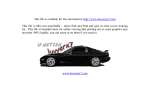
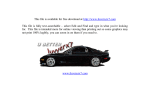
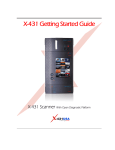

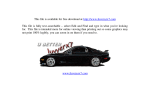
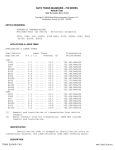
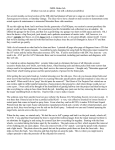

![Subject: [MB] 1987 W126 intermittent climate control](http://vs1.manualzilla.com/store/data/006030956_1-f014f75cb14526db0f9eb72ec9889b7e-150x150.png)
